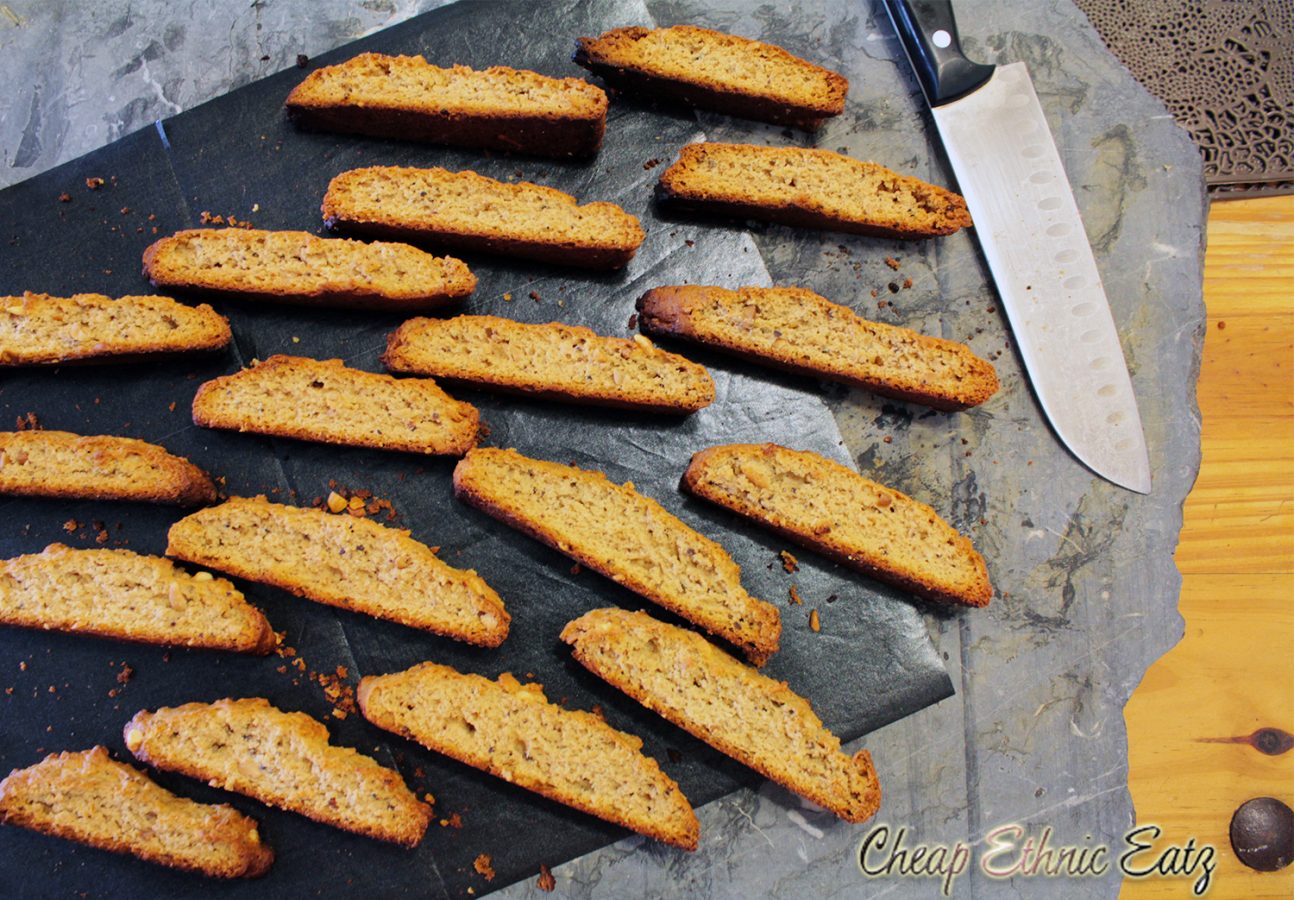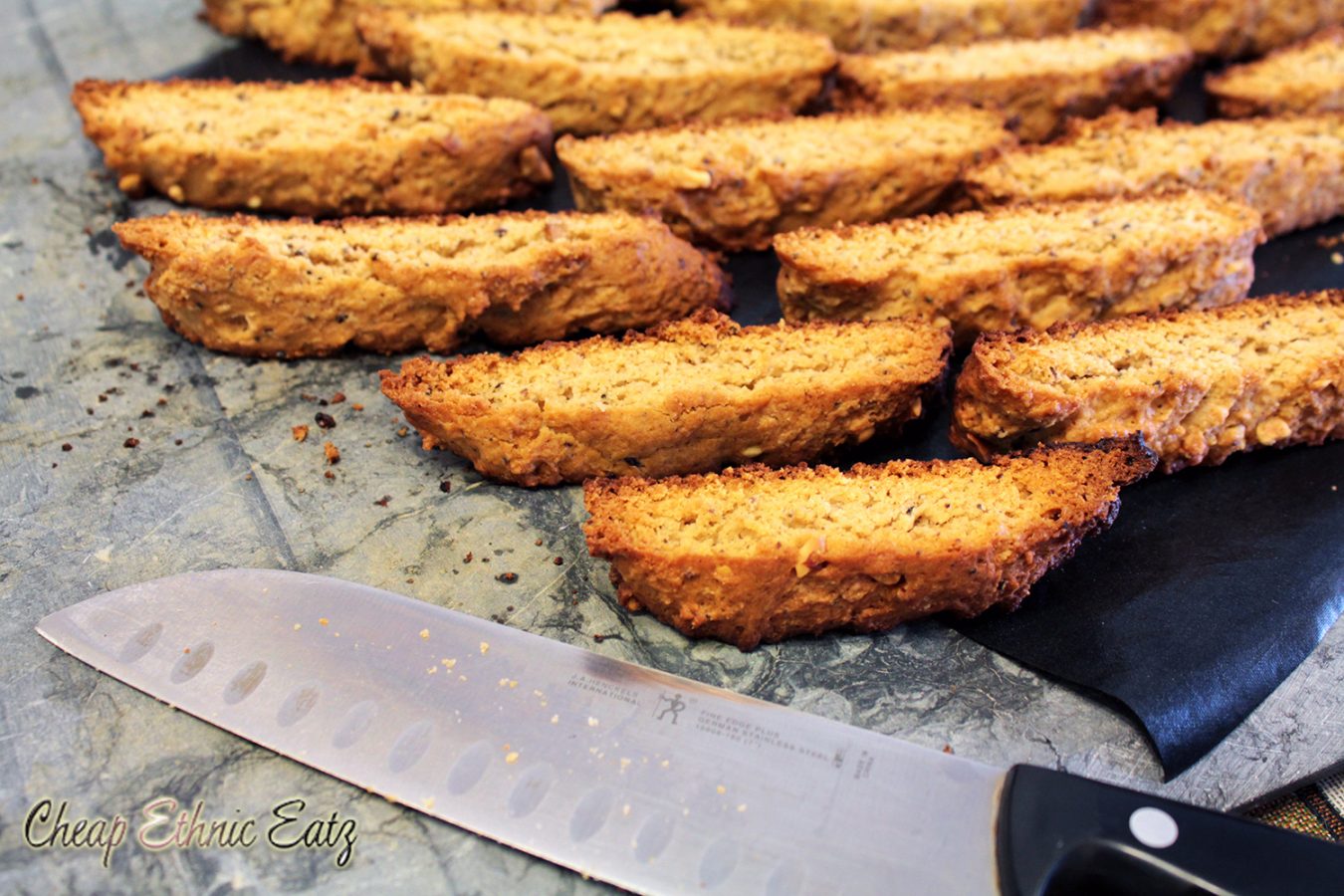This is my second time participating in the International Food Challenge group that was created to explore the cuisines of the world, as well as the heritage of those country. A monthly host picks a part of the world and shares with us a few of the local recipes to make on our own.
This month we take a look at the cuisine of East Africa and I prepared a Tanzanian biscotti called a Juju cake.

Our host this month for our East African Cuisine journey is Ramya from Lemon Kurry. East Africa is the easterly region of the African continent, specifically the Eat Africa Community (EAC) with Tanzania, Kenya, Uganda, Rwanda and Burundi. There are many wonderful National Parks to explore here while on safari, including the famous Mount Kilimanjaro. Bigger name cities include Dar Es Salaam, Nairobi and Addis Ababa. Although the official language of the EAC is English, Swahili is spoken throughout the African Great Lakes region.
Photo from cjasik: Mount Kilimanjaro
The cuisine of East Africa varies from area to area. In the inland savannah, the traditional cuisine of cattle-keeping peoples is distinctive in that meat products are generally absent since cattle, sheep and goats were regarded as a form of currency. In some areas, traditional peoples consume the milk and blood of cattle, but rarely the meat. Elsewhere, other peoples are farmers who grow a variety of grains and vegetables. Maize (corn) is the basis of ugali (a cornmeal porridge), the East African version of West Africa’s fufu. In Uganda, steamed, green bananas called matoke provide the starch filler of many meals.
Around 1000 years ago, the Arabs settled in the coastal areas of East Africa, and Arabic influences are especially reflected in the Swahili cuisine of the coast – steamed cooked rice with spices in Persian style, use of saffron, cloves, cinnamon and several other spices, and pomegranate juice. Several centuries later, the British, Portuguese and the Indians came, and both brought with them their foods, like Indian spiced vegetable curries, lentil soups, chapattis and a variety of pickles. Portuguese also brought from their Asian colonies fruits like the orange, lemon and lime, chilies, peppers, tomatoes, pineapple, bananas, and the domestic pig.

I chose to make the Juju cake which is an East African cookie similar to a biscotti, I think specifically from Tanzania. In case you are wondering, the word Jugu means peanut in Kiswahili . The traditional recipe requires you to make your peanut butter with roasted peanuts but with a hot and humid kitchen I opted for this recipe that used already made peanut butter. Great with coffee!


Jugu cake
Ingredients
- 1 2/3 cups flour
- 1 1/8 cups sugar
- 1 1/4 teaspoon baking powder
- 1 egg
- 1 teaspoon vanilla extract
- 1/4 cup olive oil
- 3/4 cup milk
- 3/4 cup crunchy peanut butter
Instructions
- Combine all dry ingredients in a bowl and mix well.
- Combine all wet ingredients in another bowl and mix well until homogeneous.
- Pour the wet ingredients over the dry ingredients and mix together to make a dough.
- Divide in two and shape into flattened logs on a parchment paper lined baking sheet.
- Bake in a preheated oven at 350F for 30 minutes.
- Remove the logs from the oven, let stand for 5 minutes and cut the logs evenly into equal-sized pieces.
- Place them back in the oven for another 10 minutes and let cool on a wire rack.
The International Food Challenge is a joint effort by Sara from Sara’s Yummy Bites and Shobana from Kitchen Secrets and Snippets. Check out their Facebook Group where the challenges are announced.
Check out more African recipes here:




Very good biscotti-like cookie. They’re not super sweet, so they’re not cloying to have with a cup of coffee. The only downside is that the recipe, as written, won’t quite get the cookie completely dried out. I had to flip mine and put them back for another 8 minutes to get both sides crisp and browned.
Thank you for trying the recipe and your comment
This name sounds very familiar and I must have heard of it before. I’d love to taste it next time. If this is similar to biscotti, I’d enjoy it with coffee! 🙂
Thre are kitchen that are quite unknown to most of the world and it they do have dishes that are noteworthy. These biscotti look absolutely mouthwatering and the perfect accompaniment to a hot chocolate or a cup of coffee!
Such an interesting cake Evelyne…I love the crunch peanut butter in it…they sure look delicious!
Have a wonderful week 😀
Thanks for choosing my recipe. It looks like they turned out well for you! Great job!!!
These look scrumptious Evelyn! Thank you for sharing this East African recipe, we love to learn about different cuisines.
Happy Baking 🙂
J+C
This looks so delicious! Would love to try it!
These sound great. So simple but so tasty.
So delicious Evelyne! Peanut butter in a biscotti sounds Heavenly!It was great to read about the East African cuisine as well.
These are so lovely.. I can smell them baking from here :). Being a girl from north Africa … I’ve to admit that I have no experience in east African cuisine!!! what a shame.
Thank you so much for introducing me to this new delectable treat, my friend!!!
Lovely ones, i think i’m gonna be glad if i had this crunch jugu cake for my brunch!!!
I was just searching up African food the other day, for a uni assignment (where I get to cook, photograph and write about a dish from another culture- perfect assignment for me!)- it is so interesting! So many things I’ve never heard of before which seem like they would taste so good! Your jugu cake looks great- I bet it’d smell amazing too, with the amount of peanut butter in it!
Sounds delicious, anything with PB is good to me 😉
I just happened to see these at another blog too and I feel they are superb. Those flavors sound so good.
May be one day when my health and time permits me, I would love to take part in such challenges. They sound so much fun and its a great way to learn new cuisines.
Aw Rich, thank you, will miss you in the office too xoxo
I could say that there were very good…. Especially with a coffee.
Thanks Evelyne I will mist the next dessert 🙁
Richard
G’day! These look terrific Evelyn and am glad to see you were part of this fun monthly challenge this month too!
I wish I could come through the screen and try one now too!
Cheers! Joanne
Ooh I like the look of this! They do look like biscotti but that’s a good thing 😀
I hadn’t a clue what kind of cuisine you’d find in East Africa, so once again, you’ve educated me! This cake/biscotti sounds terrific!
This sounds like a fun club too Evelyne and your biscotti looks yummy!
This cake is absolutely fabulous! A treat for all peanut lovers! And oh soooo easy too and you nailed it very well dear.. Can you please add your link to our linky tool which is available at below link..
http://www.lemonkurry.com/2014/07/mandazi-african-donuts-east-african.html
I believe these are better than Italian biscotti as it has peanut butter!
I will have to share this with my daughter-in-law she’ll love it. She’s Indian but was born and raised in Tanzania. She keeps us well supplied with lots of coffee and other goodies from there. I would love to try this Jugu cake with that wonderful Tanzanian coffee.
Looks so crispy dear.thanks for trying out dear